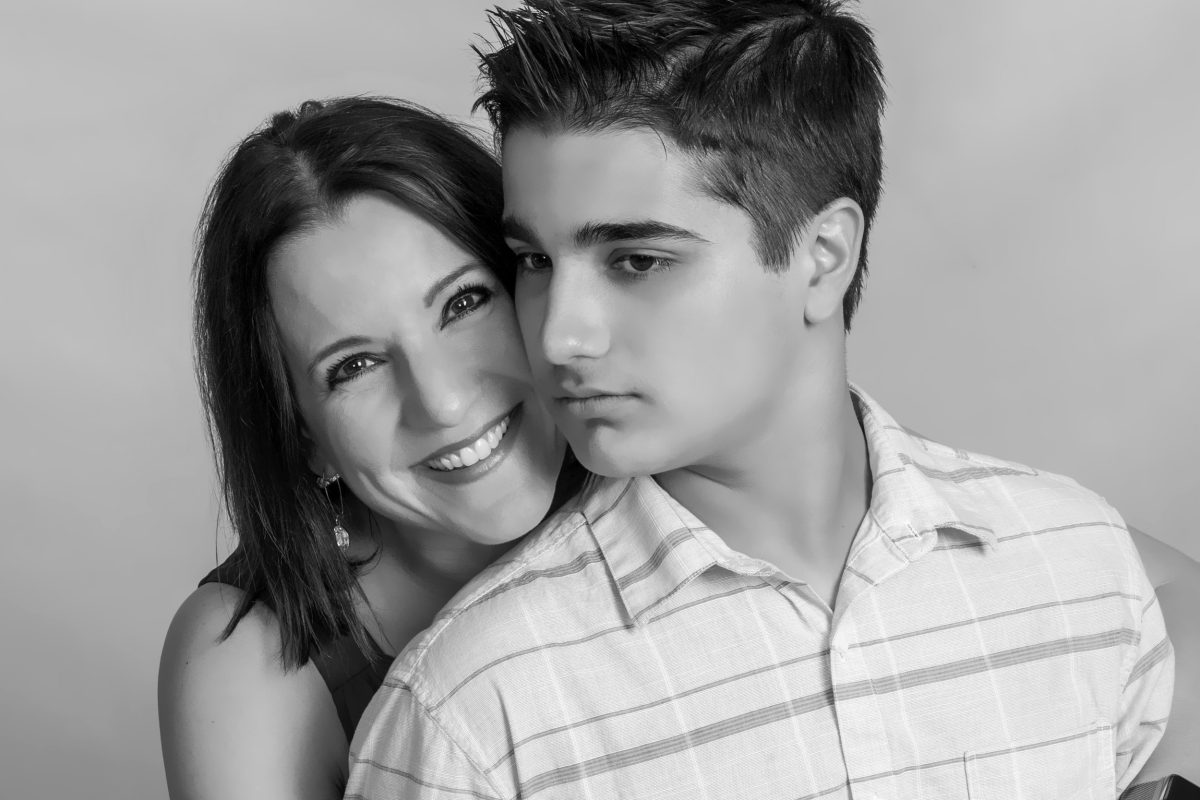
I asked Lara Garrard when she first sensed something was different with her third son, Luka. She replied, “I could tell at 6 months. He wasn’t bonding with me like his older brothers.” Lara has four sons by her ex-husband, John. When Lara talked with her new family doctor about it, he dismissed her concerns. “My older boys looked at me like I was the Madonna, you know? Luka’s gaze didn’t follow me when I walked. He cared about eating but [the connection was not the same].” Lara’s intuition continued to tell her something was different. When Luka wasn’t talking at three years old, he was eventually tested and diagnosed with severe autism. The family’s journey of education and care began.
Because of the severity of Luka’s autism, he required 24/7 care. For five years, Lara’s parents lived in Lara and John’s house to help care for Luka. Even with four adults, caring for him and the other boys was difficult. Lara and John’s marriage did not survive. They were apart for two years when the boys’ father took his own life six months after the couple’s divorce was final.
At this point, Lara carried the primary responsibility of caretaker for Luka and her other three children as they grieved the loss of their dad and beyond. By the time Luka was 7, her parents no longer lived with Lara but would care for Luka when Lara was working as a flight attendant.
As Luka grew, he ironically became the biggest of her boys at the time and the most destructive. He kicked a door so hard that it came off the hinges. He punched a hole in his wall and would snack on the drywall. The condition where an individual eats non-food items is pica. According to a study published by the American Academy of Pediatrics, 28.1% of children with autism and a co-occurring intellectual disability have pica.
Luka had damaged every lower kitchen cabinet in the family home. Not only would he keep his brothers up at night if in the same room, but he also physically hurt them. Consequently, Lara had to put Luka’s three brothers in one bedroom to ensure they were safe and able to sleep.
Lara’s sister-in-law, Nami, has always been a staunch advocate for Luka and Lara. But eventually, sitting in the kitchen of Lara’s home, watching Luka, 7, spin about while they protected him and whatever else they could, she said, “Lara, you are no longer what is best for your son.”
Nami applauded the excellent care Lara gave her son. But with an education in counseling, she recognized that a parent was not going to be able to give Luka everything he needed to survive, much less thrive. In addition, Lara’s other sons were unable to receive her focused attention. The demands of caring for Luka were that great.
Lara began to consider residential care but hated the idea of Luka not living with the family. She went back to a pediatric neurologist who had cared for Luka early on. In talking with him, she was finally convinced that residential care was better for Luka than staying at home. Her doctor told her, “Lara, you could spend every day of your life caring for Luka and not make a bit of difference in the trajectory of his life. Or, you can have professionals take care of Luka and you can take care of your other three boys. That way, you will make a difference in all of their lives.”
Obviously, making this decision FOR Luka was very emotional. Lara worried constantly about the kind of experience he would have in residential care. But she wanted to optimize Luka’s life.
In online Autism support groups, she received criticism from some members for even considering residential care even though those individuals didn’t know the extent of Luka’s condition. Even some of Lara’s friends who had met Luka criticized her decision. There is a spectrum of impact with autism. Some autistic individuals can communicate and function in society. Others’ conditions are profound. Luka had frequent dangerous and destructive episodes that included kicking, hitting and biting.
Critics called Lara selfish when in fact, placing Luka in residential care was the most selfless thing she has ever done. If you knew Lara, you would know that her children and her family are everything to her. Lara worked tirelessly to ensure Luka qualified for governmental financial support, which he did. Her hard work eventually paid off when Luka’s placement at award-winning Heartspring in Wichita, Kansas was confirmed. There, Luka would be cared for by a behavioral team, a speech pathologist, an occupational therapist, a special education teacher and others.
When planning the trip to take Luka, then 8, to Heartspring, Lara asked her brother, Tom, to join her. She met the team of caregivers and then spent the day fixing up Luka’s room. Heartspring intentionally separates the children from their parents to make the process easier. Lara and Tom spent one hour with Luka toward the end of the day before Heartspring required they leave him in the care of strangers.
While she knows the team of people very well now, she didn’t at first. Lara describes her demeanor toward Luka’s new caregivers as, “not nice.” “It felt like they were taking my child away,” she explains, even though she knew it was in his best interest. The care team spoke about Luka as if they knew him better than Lara did. She came to realize that they knew his behaviors better than she did at the time because of their expertise and experience working with children like Luka.
Lara managed not to cry until their return flight took off. As she was sobbing, her brother said, “What are you crying about? You just gave your son the best shot at a good life.” Those words gave her great comfort. She began to focus on the future and had hope for the kind of life her son would have.
Luka has been at Heartspring for 13 years. The first thing he learned was how to use the toilet, something Lara had been trying to train him to do for the better part of six years. Heartspring knocked it out in three months. Lara visits as often as she is able. Her job as a flight attendant (now retired) made flying to Wichita from her Austin home easier. She got remarried and recently earned her master’s degree in special education with the hope of helping other families and children affected by autism. She also took on the role as State Chair for the Texas Affiliate of the National Council on Severe Autism, National Grassroots Network.
Luka comes home for several weeks during the year which are cherished but exhausting times as he still requires round-the-clock care. He manages to say a word here and there but remains primarily non-verbal. However, Heartspring taught Luka to communicate needs and preferences via an iPad mini, something Lara would not have known was even possible.
In addition, Luka can now go on the family boat, eat at a restaurant without issue and participate in a host of activities with his family. Thankfully, he is loving and happy. As far as Lara and her family are concerned, Heartspring is a Godsend because Luka has flourished there. He has accomplished more than he ever could have at home. Now Lara worries about his life after Heartspring because he will have to exit the facility when he turns 22. Rest assured, whatever is next for Luka will be meticulously evaluated and decided with love.
This blog was originally written by Beth Scholtes and featured on the blog for the National Council for Severe Autism.
Beth Scholtes blogs at https://www.bethisdiggningdeep.com. An earlier version of this blogpost was published on that site.
